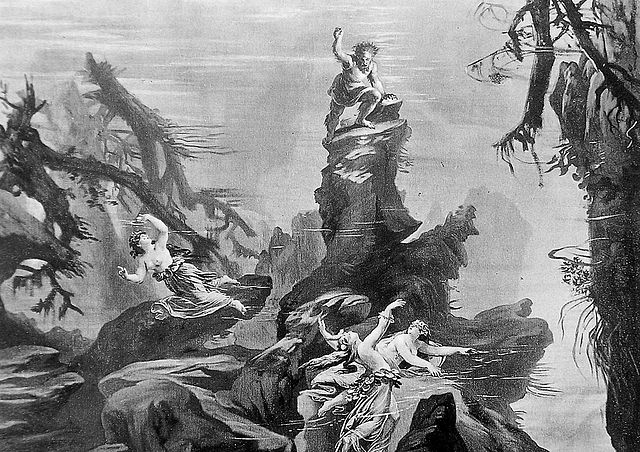The Wagner tuba is a four-valve brass instrument commissioned by and named after Richard Wagner. It combines technical features of both standard tubas and French horns, though despite its name, the Wagner tuba is more similar to the latter, and usually played by horn players. Wagner commissioned the instrument for his four-part opera cycle Der Ring des Nibelungen, where its purpose was to bridge the acoustical and textural gap between the French horn and trombone.
Model 110 Double tuba in F/B♭ built by Gebr. Alexander Mainz. Rhein. Musikinstrumentenfabrik GmbH (Mainz, Germany)
Der Ring des Nibelungen, WWV 86, is a cycle of four German-language epic music dramas composed by Richard Wagner. The works are based loosely on characters from Germanic heroic legend, namely Norse legendary sagas and the Nibelungenlied. The composer termed the cycle a "Bühnenfestspiel", structured in three days preceded by a Vorabend. It is often referred to as the Ring cycle, Wagner's Ring, or simply The Ring.
Scene 1 of Das Rheingold from the first Bayreuth Festival production of the Bühnenfestspiel in 1876
Illustration of Brünnhilde by Odilon Redon, 1885
Amalie Materna, the first Bayreuth Brünnhilde, with Cocotte, the horse donated by King Ludwig to play her horse Grane
The Rhinemaidens in the first Bayreuth production in 1876





